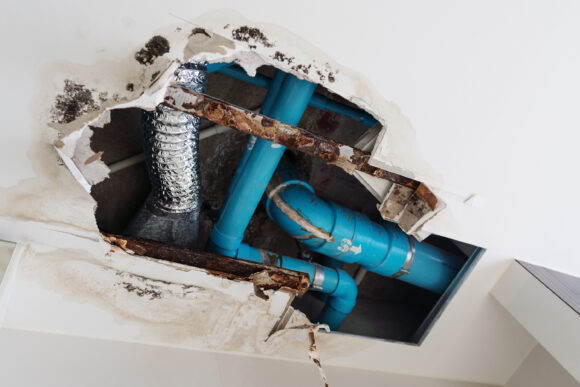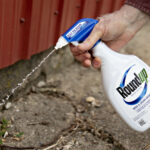Nearly a third of homeowners’ insurance claims are caused by water damage, costing carriers an average of more than $11,000 per claim.
Insurers can recover some of those costs through subrogation if the damage was caused by defective materials or improper installation, but they have to act fast to preserve evidence and hire the right kinds of experts to prove their case, an attorney who specializes in subrogation said Thursday during a webinar hosted by the Property Liability Resource Bureau.
Joseph Rich, a managing partner at Cozen O’Conner’s Miami office, said it’s not uncommon for claims adjusters to discover that poor quality materials or sloppy installation was the cause of a loss. The secret to recovery, he said, is to document the evidence and find experts that can explain the tell-tale signs of a plumbing failure.
“Generally speaking, I find there are often more recovery opportunities in water damage claims when the evidence is preserved and, unlike some fire losses or construction defect cases, the components are often better preserved for an investigation if kept even if removed and repairs were done,” Rich said in an email. “Unlike other loss scenarios, even with a latent investigation in a water claim, if the physical evidence has been kept in some form, there are better odds at identifying the root cause.”
He added that the odds of identifying the root cause increase if the loss involves a newer property or recent work was done.

You have to look close. Different materials leave different signs.
Chlorinated polyvinyl chloride has become a common material for residential plumbing systems because the pipes, which are known for their distinct orange hue, are easy to install, inexpensive and don’t require a torch to solder, avoiding a potential fire hazard. But CVPC can easily fail if not installed correctly, Rich said. Leaks often develop because too little glue was applied on the joints. If there are gaps in the bead of glue — or no bead of glue at all — that shows not enough was applied.
Product defects can also lead to CVPC pipe failures. Cleaners, fungicides and greases may cause an adverse chemical reaction that causes environmental stress cracking, Rich said. Faint cracks in the interior of the pipe will show that the material was not able to stand up to ordinary use.
CVPC pipe failures are a common cause of water damage claims, Spartan Recoveries said in a blog post.
“There have been many instances where pipes are laid in slab work by one worker who is followed by another gluing the line together who unfortunately misses a few joints,” the company said. “The pipes are then covered by cement and usually maintain their connectivity for a few years, then eventually start moving apart which results in a very costly slab leak.”
Rich said it is important to inquire about whether there is a history of water loss on a property, because frequently pipes and valves installed on a project will come from the same defective batch.
“So, if you have a failure there’s a potential you will have more than one,” he said.
Water supply lines are also a frequent cause of water damage losses. Cleaning tablets that are placed in toilet tanks can corrode the lines if they are made from wet materials, Rich said.
Overtightening is a common installation mistake. Rich said almost every water supply line has a tag cautioning the buyer to “hand tighten only,” but sometimes a tool is used anyway. There’s a tell for that: Rich said tools leave “witness marks” — a scratch or abrasion on the valve material.
Leaking water filters are also a frequent cause of water damage. Rich said circumferential cracks around the filter shows that there is a material defect.
Recovering from the manufacturing may be a problem, however, Rich said many homeowners are buying generic filters through Amazon that have no serial numbers of other means of identifying the manufacturer.
New installation methods can create new ways for plumbing to fail. Rich said nowadays copper pipes are often joined together by press fitting instead of solder, especially for large commercial projects and condominiums. The installer uses a tool that squeezes a flange on one end of the pipe to secure it to the slightly more narrow end of the other pipe.
Rich said the pressing tool has to be calibrated to ensure that the right amount of pressure is applied. He said when he investigates a leak caused by a press-fitted pipe, he asks the plumbing company that installed the pipe to preserve the tool that was used and not to recalibrate it.
Rich said preservation of evidence is essential no matter what material is used. Unfortunately, homeowners or plumbers don’t realize that it is important to keep the materials. That’s why it’s important to act fast.
“I’ve had a lot of cases where before we got involved the party said, ‘Nobody told us to keep it. We just trashed it.'”
When materials are kept on hand, an array of experts may be needed to figure out what went wrong. Rich said sometimes it makes sense to ask an engineer, a metallurgist and a material scientist to weigh on on a cause of loss issue.
There is likely plenty of work available for experts who know how to detect a material failure or sloppy installation.
Water damage and freezing was the cause of 29.4% of homeowners’ claims in 2019, according to the Insurance Information Institute, and ranged from 18.7% to 42.4% in the previous four years. The average claim cost $11,098 from 2015 to 2019.
Was this article valuable?
Here are more articles you may enjoy.


 What The Return of California’s ‘Death Discount’ Means for Litigation
What The Return of California’s ‘Death Discount’ Means for Litigation  First Brands Judge Approves Examiner to Probe Fraud Allegations
First Brands Judge Approves Examiner to Probe Fraud Allegations  Bayer Gets Supreme Court Hearing in Challenge to Roundup Suits
Bayer Gets Supreme Court Hearing in Challenge to Roundup Suits  California Bill Would Require Insurer Claims Handling Plans, And Double Penalties
California Bill Would Require Insurer Claims Handling Plans, And Double Penalties 